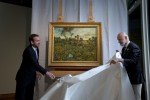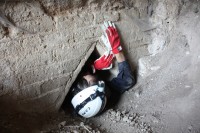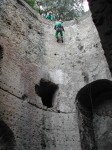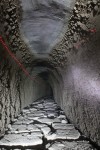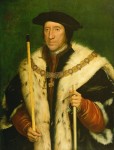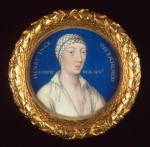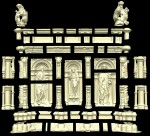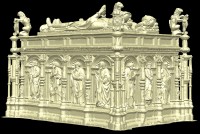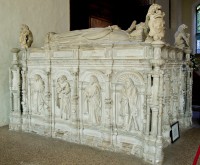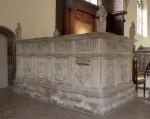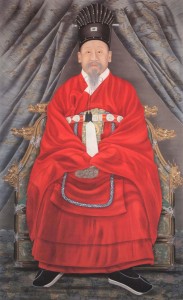 When the third century A.D. battlefield was discovered at Harzhorn, 60 miles south of Hanover, Germany, in 2008, it upended the conventional historical wisdom that Rome withdrew its legions permanently to the Rhine-Danube border after their devastating loss at the Battle of Teutoborg Forest in 9 A.D.
When the third century A.D. battlefield was discovered at Harzhorn, 60 miles south of Hanover, Germany, in 2008, it upended the conventional historical wisdom that Rome withdrew its legions permanently to the Rhine-Danube border after their devastating loss at the Battle of Teutoborg Forest in 9 A.D.
This seminal archaeological find started off modestly in 2000 when two metal detector enthusiasts looking for the remains of a medieval fortress discovered what they thought was a twisted and gnarled medieval iron candlestick. They kept the piece for years, not paying it much attention, until in 2008 they took it to local archaeologist Petra Loenne who identified it as a Roman hipposandal. These are not common finds in Lower Saxony, hundreds of miles north and east of the Roman frontier. Loenne assembled a team of professional archaeologists and historians plus dedicated metal detector hobbyists to investigate the field in which the hipposandal had been found.
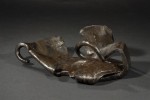 Over the course of three months during the summer of 2008, the team found a large ancient battlefield covering a mile of German forest. They recovered 600 artifacts just from the surface of the battlefield, including clusters of Roman sandal nails, spear tips from ballistae (Roman artillery crossbows) all pointing in the same direction, axes, wagon parts, arrowheads and coins. The coins were from the first half of the 3rd century A.D. and a fragment of wood still attached to the arrowhead was radiocarbon dated to the same period.
Over the course of three months during the summer of 2008, the team found a large ancient battlefield covering a mile of German forest. They recovered 600 artifacts just from the surface of the battlefield, including clusters of Roman sandal nails, spear tips from ballistae (Roman artillery crossbows) all pointing in the same direction, axes, wagon parts, arrowheads and coins. The coins were from the first half of the 3rd century A.D. and a fragment of wood still attached to the arrowhead was radiocarbon dated to the same period.
 The discovery of so late a battlefield far beyond the Rhine-Danube border led to five years of excavations on the site. An astonishing 2,700 artifacts have been found thus far, and excavations are still ongoing. The most recent discovery was made by archaeologists from the Freie Universität Berlin who discovered several pieces of Roman chain mail. Chain mail has been found before in warrior burials, but these are the first well-preserved pieces of body armour found on a Germanic battlefield. The team has been excavating the edges of the battlefield in an attempt to determine the full extent of the fighting and whether there were distinct areas where the overall battle broke down into smaller individual clashes. The discovery of the chain mail suggests the battle may have been particularly intense along that edge.
The discovery of so late a battlefield far beyond the Rhine-Danube border led to five years of excavations on the site. An astonishing 2,700 artifacts have been found thus far, and excavations are still ongoing. The most recent discovery was made by archaeologists from the Freie Universität Berlin who discovered several pieces of Roman chain mail. Chain mail has been found before in warrior burials, but these are the first well-preserved pieces of body armour found on a Germanic battlefield. The team has been excavating the edges of the battlefield in an attempt to determine the full extent of the fighting and whether there were distinct areas where the overall battle broke down into smaller individual clashes. The discovery of the chain mail suggests the battle may have been particularly intense along that edge.
The chain mail, which was found in several fragments, consists of thousands of small chain links with a diameter of about six millimeters. The iron in the rings, however, is largely decomposed. Chain mail was worn in battle by Roman soldiers of various ranks. Germanic warriors usually waived this protection; however, in Germanic burial grounds, remains of those laboriously produced armor can often be found. In this case, not only the object itself was an unusual find, but also the position in which it was found. It was located directly on the edge of the battlefield with probably the most intense combat action that could be detected on the Harzhorn hill.
“This discovery represents something fundamentally new for the Battle at the Harzhorn,” said [lead archaeologists Prof.] Michael Meyer. “This is the first time that an almost complete part of personal armor was found.” Meyer said it is possible that the chain mail was stripped from a wounded Roman soldier by his comrades because they wanted to dress his wounds and carry him away from the battle zone. It is conceivable that they left the chain mail behind. However, it is also conceivable that it was specifically laid down in a certain place by Germanic soldiers after the fighting was over, as an indication that this location played a special role in the fighting.
Two or three links from chain mail have been found on the Harzhorn battlefield before, but they were probably lost during combat. These are lumps from an entire chain mail shirt that was removed and carefully folded on the spot. The largest pieces are about as big as a hand; most of the fragments are much smaller. Much of the iron has degraded, but you can clearly see the mail rings and structure in X-rays.
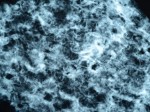 The chain mail is still in the process of being fully excavated and cleaned. Once it’s been properly conserved, the chain mail will join its brethren at the State Museum of Braunschweig in Lower Saxony where the exhibition Rome’s Forgotten Campaign: Battle at Harzhorn is offering the public the first chance to see the Harzhorn finds on display. The exhibit tells the story of the discovery and explains the historical context of this battle.
The chain mail is still in the process of being fully excavated and cleaned. Once it’s been properly conserved, the chain mail will join its brethren at the State Museum of Braunschweig in Lower Saxony where the exhibition Rome’s Forgotten Campaign: Battle at Harzhorn is offering the public the first chance to see the Harzhorn finds on display. The exhibit tells the story of the discovery and explains the historical context of this battle.
According to ancient historians like Herodian of Antioch and the author(s) of the Historia Augusta, towards the end of the reign of Emperor Alexander Severus (r. 222-235 A.D.), the Rhine-Danube border was weakened by troop withdrawals. The emperor was using the legions in his Persian campaigns, a tactical choice the Germans were glad to take advantage of. Raids and incursions savaged Roman territory in the Middle Rhine. Alexander Severus returned from Persia, bringing together a large Roman force at Mainz.
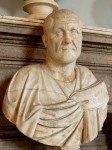
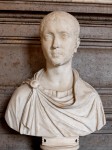 Before engaging in battle, he sought to negotiate with the German enemy. His troops didn’t like that plan since it would have deprived them of additional wages plus their share of slaves and loot, so they mutinied. Alexander was assassinated by the troops who declared low-born career army officer Maximinus Thrax the new emperor. Maximus either went forward with Alexander Severus’ attack plans or his legions were attacked by the Germanic warriors on their way back to Mainz.
Before engaging in battle, he sought to negotiate with the German enemy. His troops didn’t like that plan since it would have deprived them of additional wages plus their share of slaves and loot, so they mutinied. Alexander was assassinated by the troops who declared low-born career army officer Maximinus Thrax the new emperor. Maximus either went forward with Alexander Severus’ attack plans or his legions were attacked by the Germanic warriors on their way back to Mainz.
Until 2008, historians thought the ancient sources were, let’s just be charitable and call it embellishing, the facts on this point since there was no archaeological evidence to support a strong Roman combat presence so far east and north of the border. Harzhorn may prove to be the redemption of their reputation.
